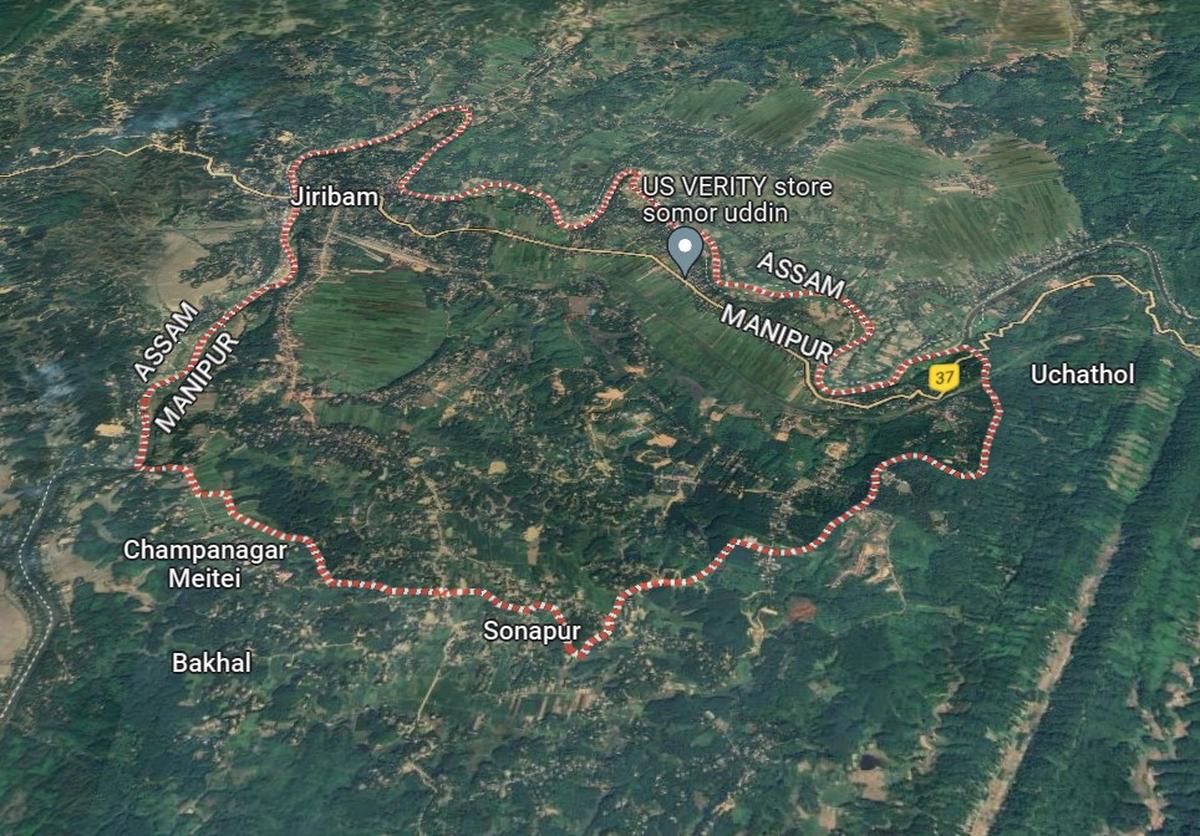People who got displaced due to violence take shelter at a relief camp in Jiribam district of Manipur on June 15, 2024.
| Photo Credit: PTI
The story so far: Jiribam district, located along National Highway-37 on the Assam and Manipur border, is the latest target of violence in the northeastern State. Manipur has been in the throes of ethnic violence between the tribal Kuki-Zo-Hmar people and the Meitei community since May 3, 2023. Over 50,000 people have been displaced and at least 221 killed so far.
What triggered the violence at Jiribam?
On June 6, Soibam Sarat Singh (59), a Meitei farmer was found dead with injuries on his neck around 5.30 pm. A resident of Sorok Atingbi in Khunou, he had gone with his family to tend to his farm. It is suspected that while returning, he was allegedly abducted by three people and killed at Mullargao, close to a Central Reserve Police Force (CRPF) camp. The murder was followed by the torching of homes of the tribal Kuki-Zo-Hmar communities and the Meitei people. Police pickets and a forest beat office were also set on fire in the subsequent days. Tribal groups allege that one person from the Kuki-Zo community is missing.
What is the demographic profile of Jiribam?
The district with a population of around 50,000 people has a presence of 13 communities which includes a large number of Hindu and Muslim Bengalis and Nagas. There are around 5,000 Kuki-Zo and about 18,000 Meiteis who live in the 232 sq km area. Situated around 220 kilometres from Imphal, it is surrounded on the east and south by Tamenglong and Churachandpur districts respectively, and on the west and north by the Cachar district of Assam. NH-37 which passes through Jiribam, connects Silchar in Assam and Imphal in Manipur, and is important for the transport of essentials to the valley areas of the State.

Google Maps image locates Jiribam district of Manipur.
What has been the situation in the past one year?
According to Achab Uddin, a Janata Dal (United) MLA of Jiribam, the district witnessed violence in the past but community leaders ensured that large-scale violence did not break out. “A day after the May 3, 2023 violence, we convened a meeting with all community leaders and formed peace committees. We were successful till June 6 this year when violence was reported. Though it has been peaceful for the past four days, a thorough investigation is needed as to who instigated the violence,” said the MLA.
What is the current status?
The MLA pointed out that a bridge divides the Kuki-Zo and Meitei villages. While each village has its own bunkers or makeshift defence structures, they were being dismantled by the police and security forces in the aftermath of the violence. He said around 800 Kuki-Zo have taken refuge in the State of Assam while 900 Meiteis are living at seven camps in Jiribam.

The farmer’s family continues to stay in their house and have demanded justice, Mr. Achab Uddin said. A joint action committee of civil society groups formed after the farmer’s murder submitted a memorandum to Chief Minister N. Biren Singh and the police naming a Kuki-Zo individual for committing the crime. They even provided the vehicle number of the suspects.
What has been the police response?
On June 9, Chief Minister Singh sought a report from the police regarding security measures taken to contain the violence. The letter sent to the Director General of Police (DGP) alleged that the CM’s office had written three letters on January 15, January 27 and January 31 apprising them about the movement of “200 armed Kuki-Zo militants” in areas bordering Jiribam but no action was taken. A police source, however, said the presence of forces is decided based on security audit and since the district witnessed negligible violence in the past, it had adequate presence. Around 5,000 troops withdrawn from the State for the general elections from April-May were gradually returning. Around 36,000 personnel from the army and the Central armed police force (CAPF) are deployed in the State, with a sizeable presence in the buffer zones, to segregate the areas inhabited by the two warring communities.
The violence at Jiribam apart, cases of extortion and abductions have increased manifold in the valley areas, dominated by the Meiteis. The presence of radical militant groups, such as the Arambai Tenggol and the United National Liberation Front (UNLF), has added to the problems. Important security decisions are being taken by the Unified Command headed by Security Adviser, Kuldiep Singh, a former CRPF Director General. Though appointed by the Manipur government, he was handpicked by the Centre and sent to Manipur on May 4 last year. A source said this was done to provide a sense of neutrality as the State police has also been divided on community lines.

